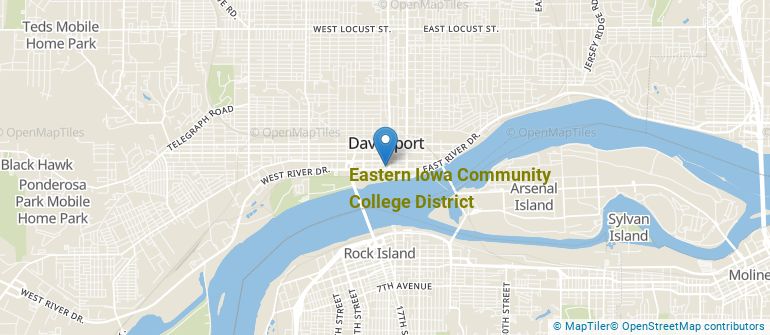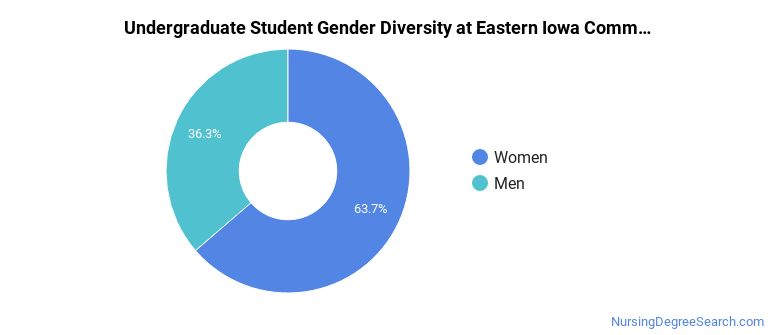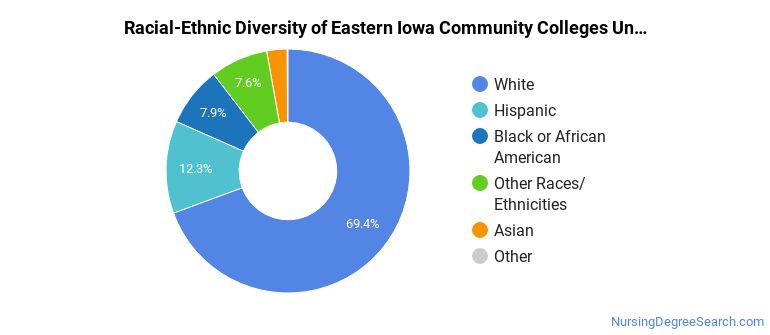Eastern Iowa Community College District Nursing Programs
Located in Davenport, Iowa, Eastern Iowa Community College District is a public institution. Davenport is a great location for students who prefer city over country life.
Where Is Eastern Iowa Community College District?

Contact details for Eastern Iowa Community Colleges are given below.
| Contact Details | |
|---|---|
| Address: | 101 W Third Street, Davenport, IA 52801-1221 |
| Phone: | 563-336-3300 |
| Website: | www.eicc.edu |
How Do I Get Into Eastern Iowa Community Colleges?
You can apply to Eastern Iowa Community Colleges online at: https://www.eicc.edu/apply
Can I Afford Eastern Iowa Community College District?
Student Loan Debt
Almost 66% of college students who graduated with the class of 2018 took out student loans, but that percentage varies from school to school. At Eastern Iowa Community Colleges, approximately 22% of students took out student loans averaging $4,698 a year. That adds up to $18,792 over four years for those students.
Eastern Iowa Community College District Undergraduate Student Diversity

Gender Diversity
Of the 2,423 full-time undergraduates at Eastern Iowa Community Colleges, 36% are male and 64% are female.

Racial-Ethnic Diversity
The racial-ethnic breakdown of Eastern Iowa Community College District students is as follows.

| Race/Ethnicity | Number of Grads |
|---|---|
| Asian | 65 |
| Black or African American | 192 |
| Hispanic or Latino | 297 |
| White | 1,681 |
| International Students | 3 |
| Other Races/Ethnicities | 185 |
Eastern Iowa Community College District Nursing Concentrations
The table below shows the number of awards for each concentration.
| Major | Basic Certificate | Associate’s | Undergraduate Certificate | TOTAL |
|---|---|---|---|---|
| Nursing Assistant/Aide and Patient Care Assistant/Aide | 146 | 0 | 0 | 146 |
| Registered Nursing | 0 | 143 | 0 | 143 |
| Licensed Practical/Vocational Nurse Training | 0 | 0 | 19 | 19 |
| TOTAL | 146 | 143 | 19 | 308 |
References
*The racial-ethnic minorities count is calculated by taking the total number of students and subtracting white students, international students, and students whose race/ethnicity was unknown. This number is then divided by the total number of students at the school to obtain the racial-ethnic minorities percentage.
More about our data sources and methodologies.
